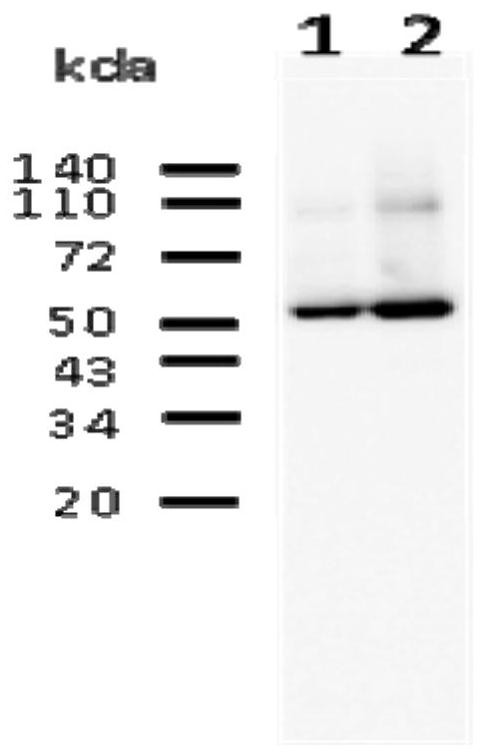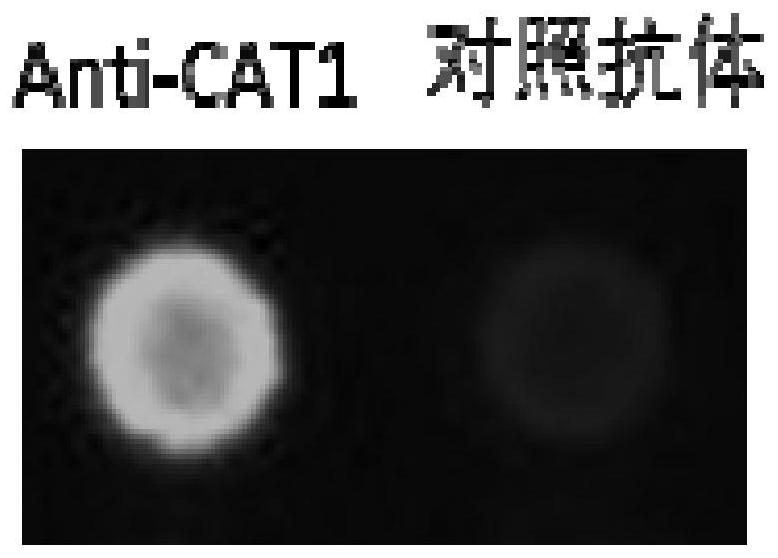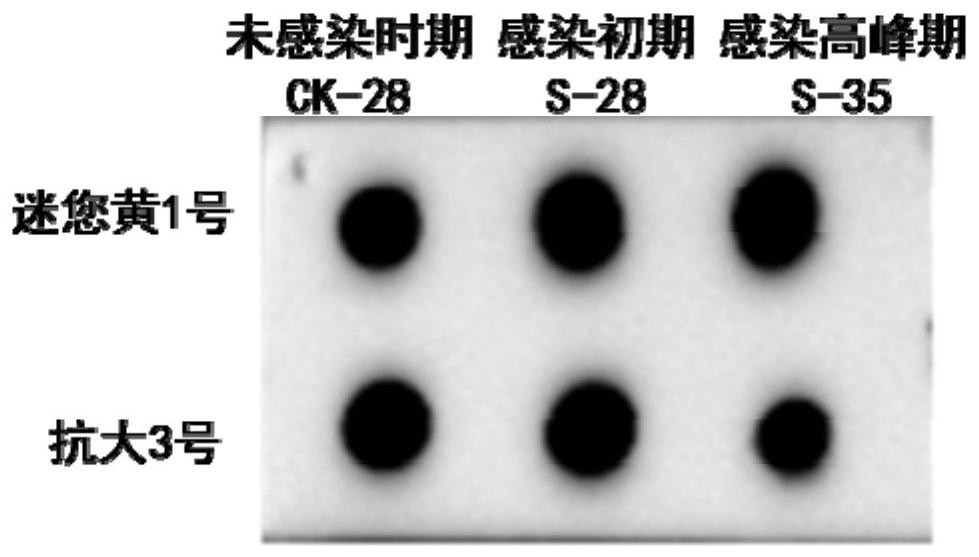A kind of monoclonal antibody for detecting cabbage catalase and its application
A catalase and monoclonal antibody technology, applied in the field of plant immunology, can solve the problems of inability to cultivate, lack of antibody tools, and low accuracy, and achieve the effect of early prevention and control
- Summary
- Abstract
- Description
- Claims
- Application Information
AI Technical Summary
Problems solved by technology
Method used
Image
Examples
Embodiment 1
[0026] The preparation of the monoclonal antibody hybridoma cell of embodiment 1 catalase and the preparation and the purification of anti-catalase monoclonal antibody
[0027]The present invention synthesizes three groups of catalase polypeptides, that is, three groups of 'VRPSSAHDSP', 'DSDRQERFVK' and 'GERYRSWDSD', respectively use them as immunogens, immunize mice to obtain lymphocytes, and use hybridoma cell fusion technology to obtain fusion cells , by Western blotting, limiting dilution and ELISA, a cell line capable of secreting high-affinity and high-specificity monoclonal antibodies, and the monoclonal antibodies secreted by the cell line were obtained, and immunoenzyme-linked, protein Imprinting, co-immunoprecipitation plus mass spectrometry and antibody chip detection and other verifications to determine the most effective antibody.
[0028] 1.1 Antigen preparation
[0029] Synthesized three groups of catalase polypeptides: 'VRPSSAHDSP', 'DSDRQERFVK' and 'GERYRSWDS...
Embodiment 2
[0040] Embodiment 2 Verification of anti-CAT1 monoclonal antibody
[0041] The 8 obtained monoclonal antibody cell lines were verified by ELISA, Western blotting, antibody chip, etc. to determine the most effective antibody.
[0042] 2.1 Elisa (immunoenzyme-linked) pairing verification of antibody and antigen polypeptide
[0043] Coat the 96-well ELISA plate with ascitic fluid antibody to be paired, incubate, wash and block overnight with skim milk, wash with PBS, and store at 4°C until use. Antigen peptides were incubated, washed with PBS, and controls were set at the same time. HRP-labeled detection antibody was added to the previously incubated ELISA plate. TMB color reaction, microplate reader reading. The titers of the 8 cell lines obtained by screening are shown in Table 1:
[0044] Table 1 Antibody ELISA detection data
[0045] Antibody name clone number 3.125K 6.25K 12.5K 25K 50K 100K 200K 400K 800K 1600K PC NC Whether to rework poten...
Embodiment 3
[0051] Example 3 Application of a monoclonal antibody for detecting catalase of the present invention in different stages of cabbage infection with clubroot
[0052] Because the antibody of the present invention has unique specificity to catalase, it can be used as a detection antibody for the different infection stages of cabbage infection clubroot, or it can be further developed into a detection kit according to conventional technical means in the art .
[0053] First, the antibody of the present invention was tested with a fixed concentration (1mg / ml) and two varieties of Chinese cabbage (Minihuang No. 1 susceptible to clubroot and Kangda No. 3 resistant to clubroot) at different stages of infection. Dot blot experiment, obtain the corresponding expression value, and draw the standard curve, the abscissa is the time coordinate of cabbage infection clubroot, and the ordinate is the dot blot detection value, as shown in Table 2, image 3 , Figure 4 shown.
[0054] Table 2...
PUM
| Property | Measurement | Unit |
|---|---|---|
| diameter | aaaaa | aaaaa |
Abstract
Description
Claims
Application Information
 Login to View More
Login to View More - R&D
- Intellectual Property
- Life Sciences
- Materials
- Tech Scout
- Unparalleled Data Quality
- Higher Quality Content
- 60% Fewer Hallucinations
Browse by: Latest US Patents, China's latest patents, Technical Efficacy Thesaurus, Application Domain, Technology Topic, Popular Technical Reports.
© 2025 PatSnap. All rights reserved.Legal|Privacy policy|Modern Slavery Act Transparency Statement|Sitemap|About US| Contact US: help@patsnap.com



